Get the week's most popular posts delivered to your inbox.
Our weekly update is free yet priceless and you're less than a minute away from getting the current edition.
In the unlikely event we disappoint, you can unsubscribe with a single click!
Last Updated on August 8, 2025 by teamobn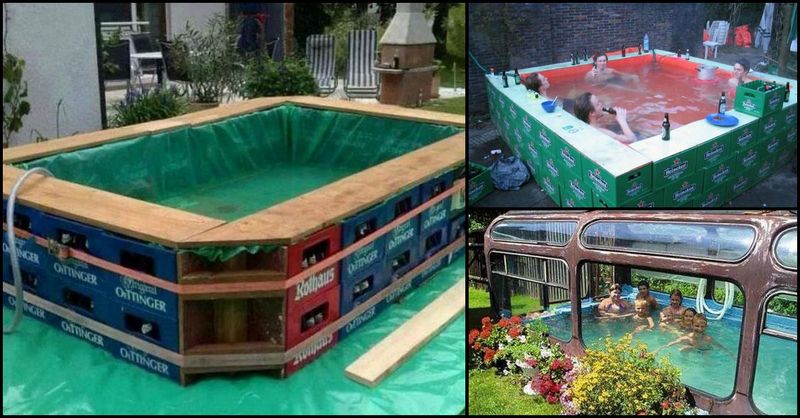
Looking for an interesting, creative, or economical way to make your own swimming pool?
A makeshift swimming pool is what you need to for a quick cooling dip. This is the best way for the summer months without spending too much on a large pool.
A makeshift swimming pool is very popular in plastic water games, like water balloon fights, but this setup is not suited for real-life swimming.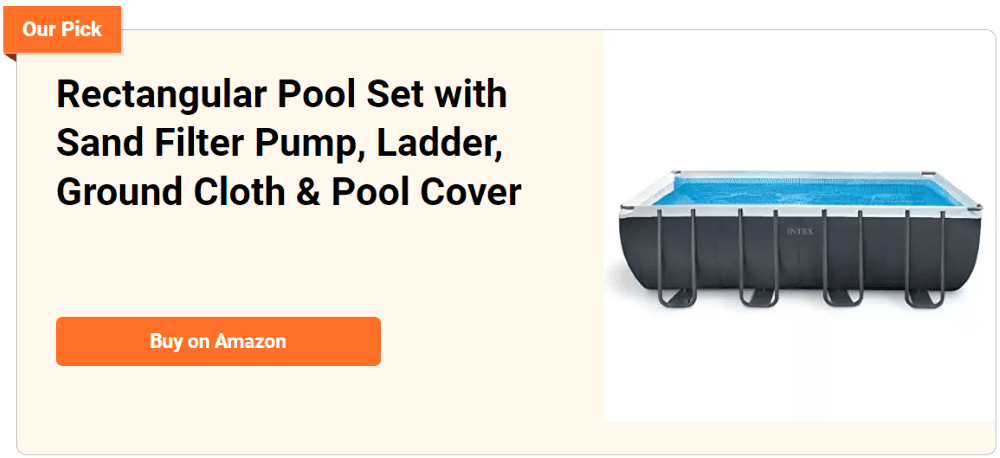
Installing and maintaining a permanent pool can be very expensive. You need to consider the cost of construction, filters, and overall maintenance. Plus cleaning a pool is very time-consuming. That’s why the idea of building a makeshift swimming pool is more appealing.
The good news is that there are a lot of options available for you. You can choose from a wide variety of temporary swimming pools. Depending on your level of construction skills, you can easily build one, and save yourself from the cost of a permanent swimming pool.
Building a makeshift swimming pool
Planning
Building a makeshift swimming pool requires thoughtful planning and strategic execution. Before you begin, it’s crucial to prepare adequately to ensure your makeshift swimming pool meets your expectations for fun and safety. Here’s how you can effectively plan your project:
Initial Planning
When planning a makeshift swimming pool, the first step is to assess the available space. You need to measure the area where you want to install the pool to ensure there is enough room for construction and safe use. This includes leaving sufficient space around the pool for access and maintenance.
Additionally, calculate the volume of water the pool will hold. This is vital for determining the suitability of the materials you’ll choose and the structure’s stability. Knowing how much water you’ll use is also important for managing resources and planning the filling and draining process.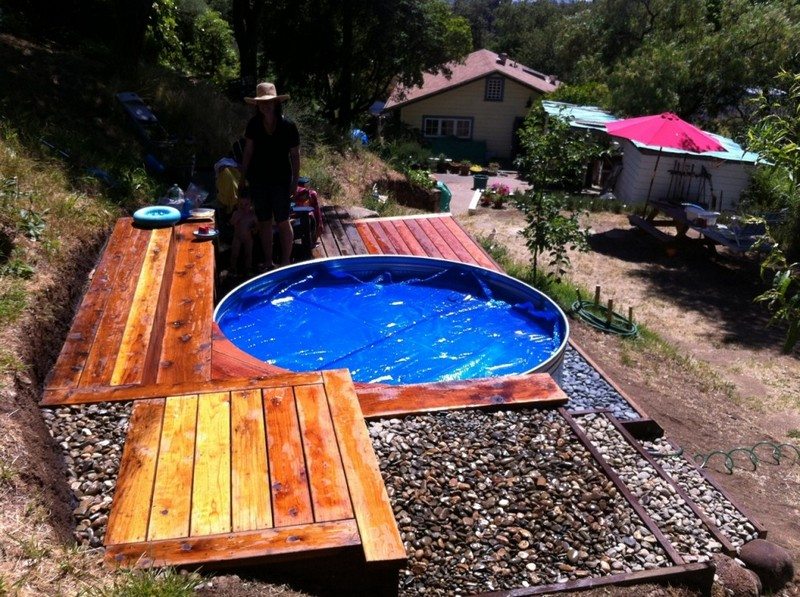
Choosing the Right Materials
The choice of materials is critical when constructing a makeshift swimming pool. Depending on your budget and the tools you have, you might opt for wood, metal, or plastic. Each material has its benefits and limitations. For instance, wood can be aesthetically pleasing but requires treatment to prevent water damage. Metal is durable but may need rust protection, while plastic is lightweight and often the easiest to assemble but might not offer the same durability as the other options.
Cost Considerations
Planning a makeshift swimming pool also involves a detailed cost analysis. Consider the price of all materials needed for the pool’s construction. Don’t forget to account for any tools or additional supplies, like screws or sealants, which you might not have at hand. Also, factor in ongoing expenses such as water treatment and perhaps a cover to keep the pool clean when not in use.
You may better handle your money by knowing the whole budget required for your improvised swimming pool if you take these factors into account.
Water Source
Any swimming pool’s building and running depend heavily on water. The viability and efficiency of the pool depend critically on a dependable and sufficient water supply.
This is how to arrange and control your water supply:
Selecting Your Water Source
Selection of the appropriate water source is crucial. The kind of water source accessible can affect the layout and style of the pool. If, for instance, you have access to a lot of natural water from a nearby lake or stream, you may include this direct supply into your pool design. Most pools, though, will depend on easier-to-manage and treat public water supplies.
Importance of Water Quality
The source of the water matters not as much as its quality. The health and safety of the users depend on your water being fit for swimming. This entails organizing for water treatment systems that can manage the amount and kind of water you want to use. Chemical balancing and filter systems are two treatments that help keep the swimming area safe and clean.
Planning for Water Disposal
Once swimming season is finished or whenever you need to change the water, you will need a practical disposal plan. Especially crucial is to avoid any negative effects on the environment.
Plan your method for safely dumping used water while following local laws to make sure you don’t damage the ecology or break any local laws.
Through attention to these three important factors—source, quality, and disposal—you can guarantee that the water in your pool is both sustainable and complies with local regulations while nevertheless being safe and refreshing.
Assembling your pool
Assembling your improvised swimming pool is now the most important phase after having your designs in place. Safety and structural integrity of the pool depend on proper assembly. Here’s how-to to make sure your improvised swimming pool is put together safely and correctly.
Gathering Materials
Assemble your improvised swimming pool only once you have all the supplies you need. This covers both tiny things like screws, nails, and sealants and structural components like panels or linings. Having everything ready at the outset will make assembly easier and lessen delays.
Using the Right Tools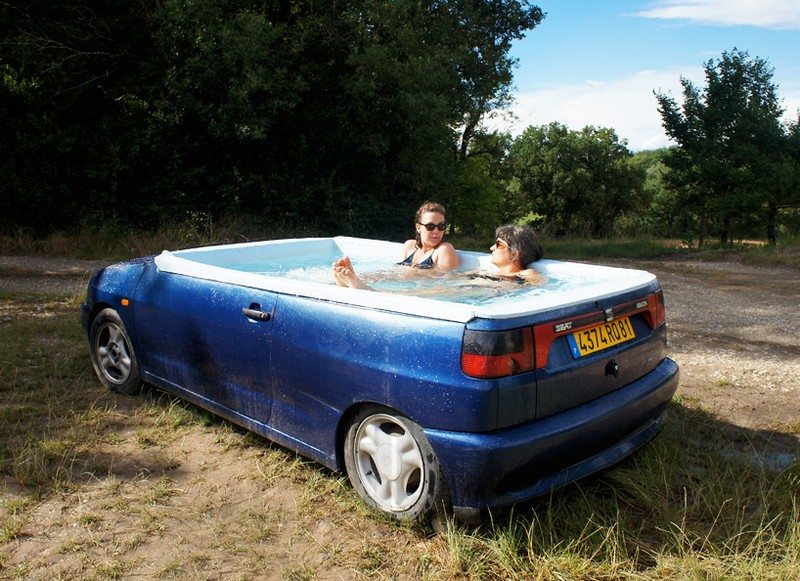
Putting together your homemade swimming pool quickly and safely requires the proper equipment. A drill, measuring tape, screwdriver and hammer are among the often used instruments. Use tools that are appropriate for the materials you are working with and in good shape. For example, you might need specialist drill bits or screws if you are working with a certain kind of metal or hard plastic.
Careful Assembly
The actual assembly process is critical. Start by laying out all the parts of your makeshift swimming pool according to your plan. Begin assembling by following a systematic approach—start from the base and work your way up to the walls.
It’s crucial to take your time during this phase. Measure twice and align everything properly to ensure that all parts fit securely. This meticulous attention to detail will help prevent issues like leaks or structural weaknesses.
Final Checks and Adjustments
Check all connections and fittings one more once the improvised swimming pool is put together. Make sure all is tight and in line. Though time-consuming, these modifications are essential to the longevity and security of your pool.
By following these steps, the assembly of your makeshift swimming pool should go smoothly, leading to a sturdy and enjoyable addition to your summer activities. The effort put into properly assembling the pool will pay off with countless hours of fun and relaxation.
Legal and Insurance Considerations
When constructing a makeshift swimming pool, it’s important to consider the legal and insurance implications to ensure that all aspects of your project are compliant and covered. Here’s what you need to know about navigating these aspects effectively:
Legal Considerations
Perform a thorough examination of the local building codes and zoning regulations before beginning construction on your homemade swimming pool.
Even for temporary buildings such as a makeshift swimming pool, most regions require permits for any work that incorporates water bodies. This includes construction that involves water bodies. In the event that these regulations are not adhered to, the individual may be subject to financial penalties or be ordered to demolish the pool.
Also, make sure you are aware of any environmental legislation that could potentially have an impact on your project. For instance, the discharge of pool water into public rivers or onto land can have an influence on the environment, and certain practices may be subject to regulation according to the circumstances.
Insurance Considerations
Having the right insurance coverage is crucial when installing a makeshift swimming pool. Contact your homeowner’s insurance provider to discuss how adding a pool impacts your policy. Typically, pools are considered an ‘attractive nuisance’ and can significantly affect liability coverage.
You should ensure that your insurance covers injuries that could occur at the pool and damages caused by the pool to your property or others’. This might require increasing your liability coverage or adding specific riders to your policy.
By thoroughly understanding and addressing these legal and insurance considerations, you can enjoy your makeshift swimming pool with peace of mind, knowing that you are compliant with laws and protected against potential risks.
Makeshift Swimming Pool Ideas
Mobile Pool
These pools are made from old cars, buses, or even a truck. All you need to do is produce a good quality tarpaulin for the siding of the area intended for your pool and fill it with water.
Portable Makeshift Swimming Pool
These pools can be made of a galvanized bucket, empty gallons, or even an abandoned bucket of an excavator. Your imagination is the limit. Make sure to consider the safety of the users before finalizing your design.
These types of makeshift swimming pools do not require too much effort or materials to build.
Click on any image to start the lightbox display. Use your Esc key to close the lightbox. You can also view the images as a slideshow if you prefer 😎
So what are you waiting for? Build one for your kids!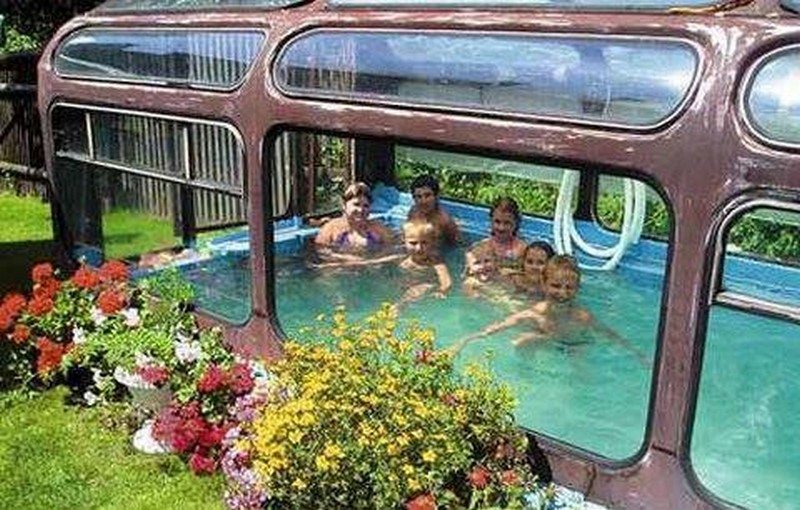
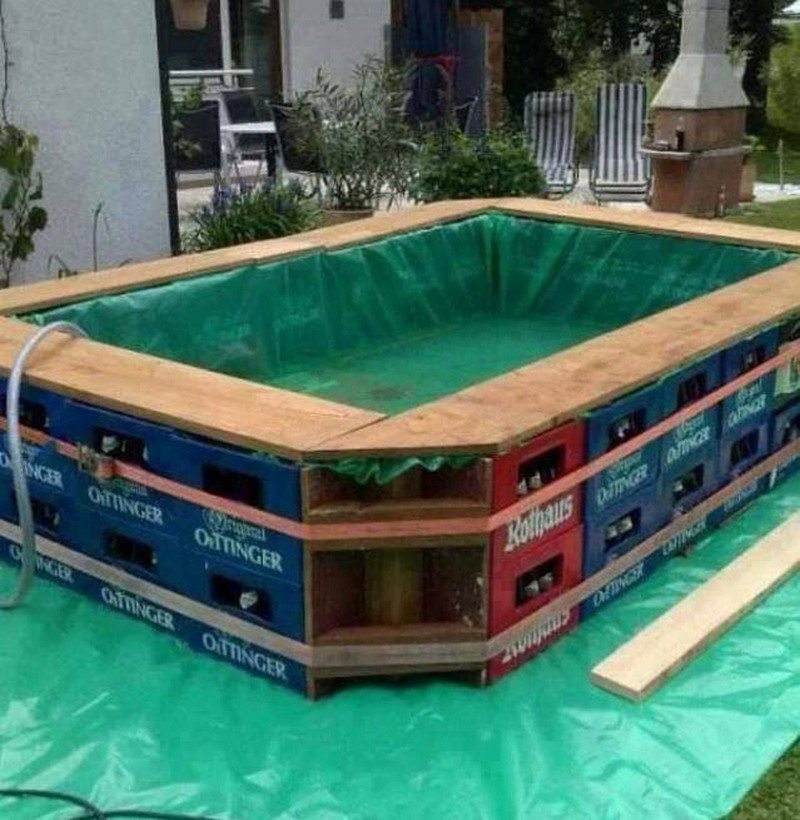




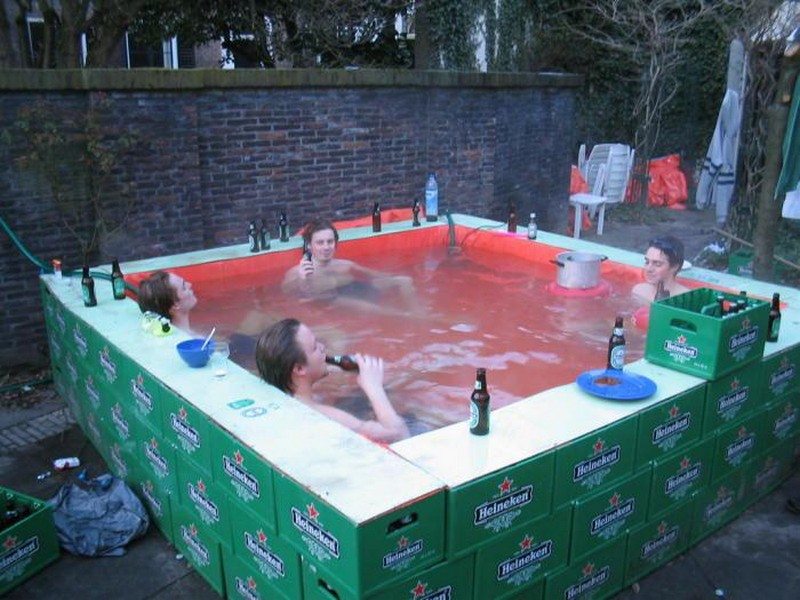
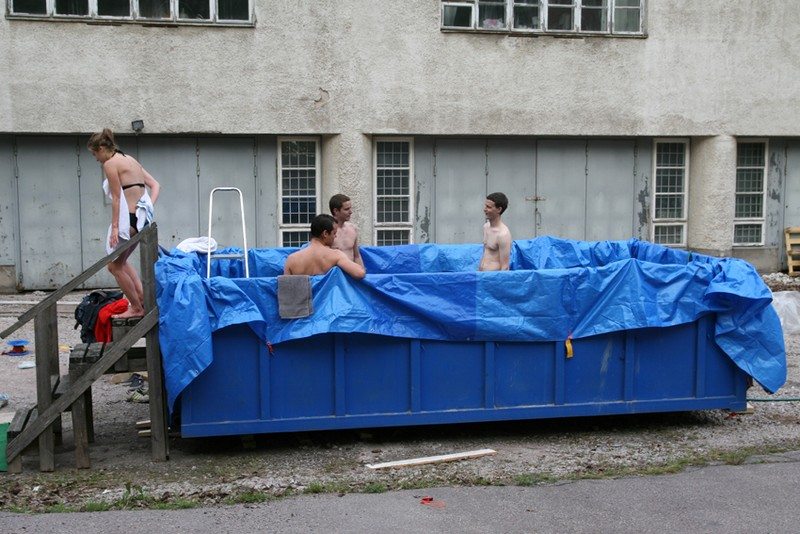

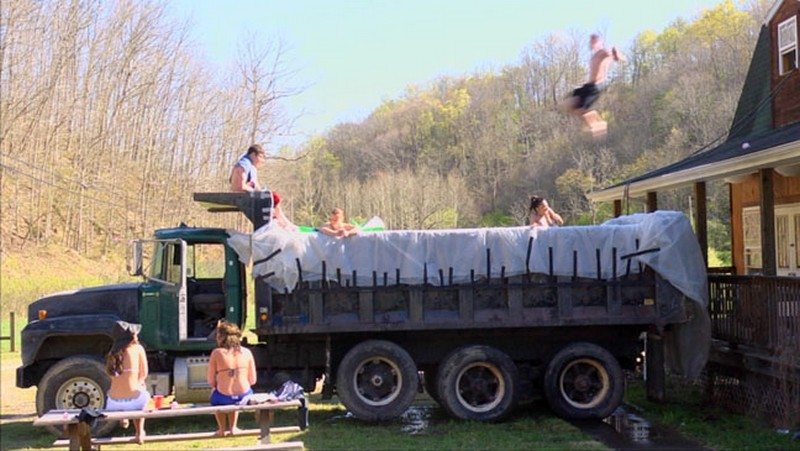
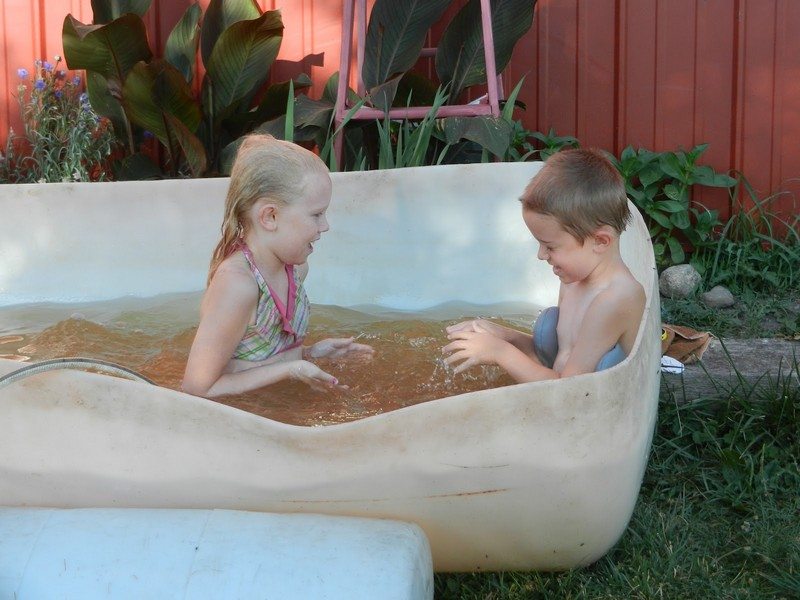

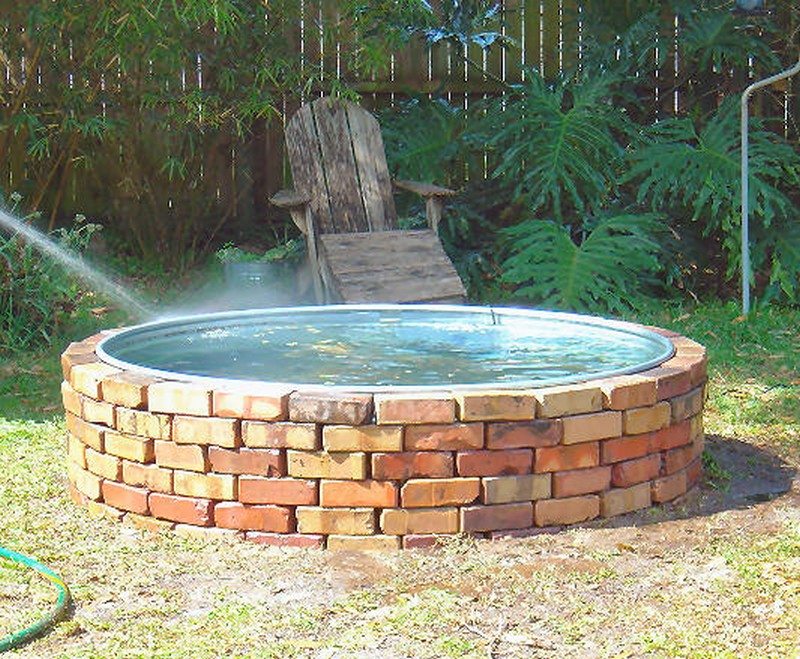
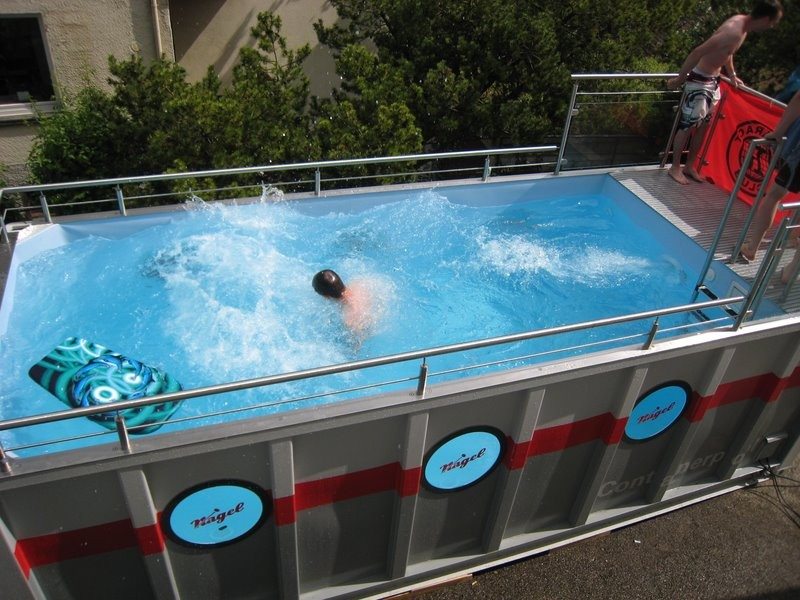
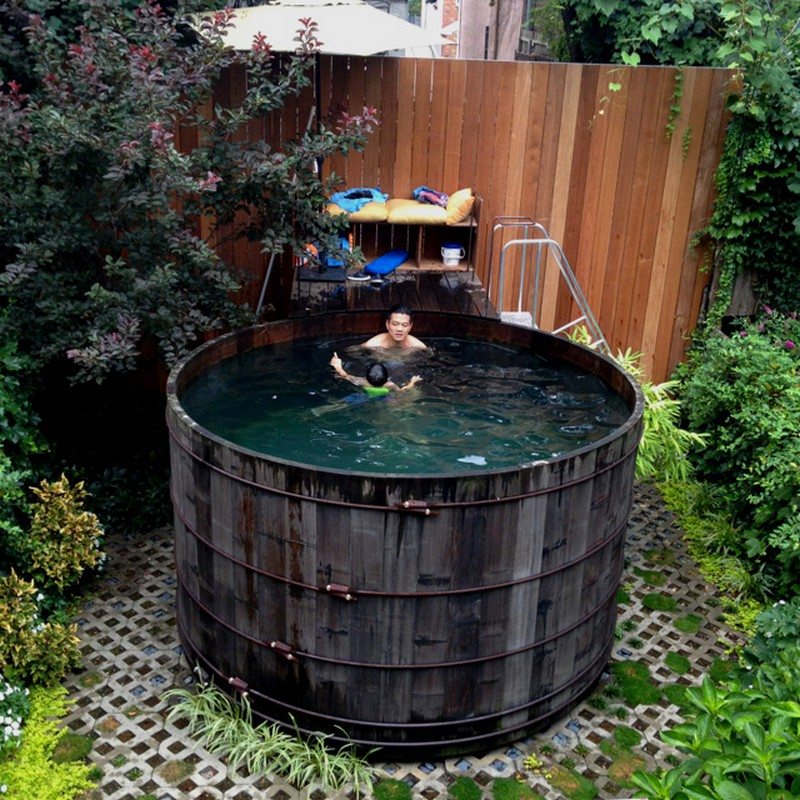
Conclusion
Building a makeshift swimming pool requires careful planning, appropriate materials, and attention to detail during assembly to ensure safety and functionality. Always consider the legal and insurance implications to stay compliant and protect yourself against potential risks. Once everything is in place, you can enjoy the refreshing benefits of your own makeshift swimming pool, providing a cool retreat during hot days.
If you liked these, you will also like viewing these water feature ideas…
Get the week's most popular posts delivered to your inbox.
Our weekly update is free yet priceless and you're less than a minute away from getting the current edition.
In the unlikely event we disappoint, you can unsubscribe with a single click!






